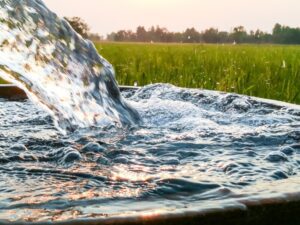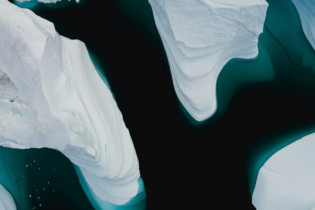Irrespective of whether the country has a water crisis or merely a problem, South Africans must conserve water systematically and effectively. A holistic countrywide educational strategy needs to be implemented and maintained to cultivate a culture of treating water as the precious resource that it is, writes Mohammed Nazzal, Senior Design Engineer at GIBB.
While the majority of us may take water for granted every time we open our taps, we should refrain from causally and excessively consuming the resource simply because it is there, or think that it will always be there. Although South Africa has been blessed with a good rainy season so far in 2022, this merely helped replenish the storage capacity of many dams across the country. The country would need at least the next two rainy seasons to register above-average levels to achieve short-term water recovery targets. Dam water levels are currently in good standing and for the majority of dams in the country, levels are higher than those recorded during the same period last year. While this is good news, we must remember that South Africa has been in this situation before, with year-on-year changes in water levels merely a short-term view of the amount of water that the country currently has access to. This means that for most areas, the likelihood of imminent water-shedding on the back of water deficiencies is low, however, some regions will still be affected. Water-shedding in South Africa is fast becoming a reality, and while not taking place on a national scale as yet, the frequency of disruptions in water delivery systems due to water shortages is greatly increasing. Most recently, Nelson Mandela Bay in the Eastern Cape fell victim to this, with water shedding being implemented in June this year. This as construction contracts to integrate the city’s water reticulation systems were delayed for several years, coupled with political divide and jurisdiction disputes that further contributed to the city’s deteriorating water situation. Water shortage is not the only road that leads to water shedding, with corruption, mismanagement, incompetence, poor planning, wasteful spending and political conflict all contributing to the problem. If these factors – many of which are within society’s influence or control – were neutralised, South Africa’s water situation would not be where it is today. A glimpse of how these factors have had a negative impact on the country’s water situation can be found in the 2022 Blue Drop Progress Report, which includes audited results from 144 water service authorities in the country. The report found that 48% of South Africa’s water supply systems are in the low-risk category, with 23% in the critical risk category and 11% deemed high risk. While it is one thing to have access to water, it is equally important to have access to good quality water. The contamination levels of the country’s rivers, streams and dams have been registering worrying trends. So much so, that many of these trends were captured in the 2022 Green Drop Report and indicated that of the 850 audited wastewater systems in the country, only 23 passed the minimum score of 90%. This is a substantial decline from the 2013 audit, where 60 wastewater systems achieved the minimum score. South Africans are by now well aware of the impact of resource shedding, most evident in the form of load shedding. A significant contributor to the country’s water problem, load shedding disrupts the water treatment process and water pumping operations and stretches the ability of the existing water storage capacity to accommodate for these.It is interesting to note that in the case of load shedding, alternative sources of energy can be made accessible, while with water shedding, alternative sources may not be as accessible or available. This means that a situation of water shedding can have more dire consequences than what we as South Africans have already experienced with load shedding.
Identifying that South Africa’s water situation has a problem is the first step to solving the problem, however, because of the nature of the problem, there is no quick fix. Well-planned and well-managed solutions are needed to address the situation on a long-term basis. It begins with water-saving measures that all South Africans can contribute to, and reducing the demand on the water system while there is still an allowable margin to do so is both sensible and necessary. Educating the public on the basics of the water cycle in relation to their own locale will help them better understand and appreciate not only the value of water, but also the infrastructure put in place to deliver the resource to them. The public will then recognise shortcomings in servicing and maintenance of the existing water systems in their areas and aid in enforcing accountability in respect of officials and politicians who may underperform. While corruption in the system will continue to be a long-term battle, people need to be conditioned to fight against it rather than accepting it as a part of life in South Africa. Advocating simple principles of electing and employing those who qualify for the roles and responsibilities based on their technical merit and expertise will go a long way towards resolving some of the inherent problems currently impeding real progress. Proper maintenance of all components in the existing water infrastructure, be it water treatment, delivery systems, wastewater collection or treatment systems, must be observed. Performance levels of operation and maintenance services must be kept high, and any compromises to that cannot be entertained. To highlight the importance of maintenance, the 2017 benchmarking of water losses in South Africa reported that 41% of municipal water does not generate revenue, while 35% is physically lost. Dealing with balancing water supply and water demand requires comprehensive planning and implementation strategies, and while a National Water & Sanitation Masterplan is already in place, polishing these plans and managing them requires continued cooperation and participation of both the public and private sectors. As such, local, regional, national and cross-border optimisation of water resources requires dedicated effort from all stakeholders. The danger of informing the public that the country has a water crisis without a proper explanation will mean that the message will not be received seriously enough by most, which in turn undermines the efforts to source their effective participation in actions that should help deal with the problem. Words such as ‘crisis’ or ‘catastrophe’ should be avoided while discussing the water situation. Instead, a better approach is to explain that there is a water problem and that there are many factors that contribute to that problem. Depending on how we, as the collective population, address and deal with these factors, the water situation would then become better or worse. People can better relate to and are better motivated by issues they can perceive to be within their sphere of influence, something that doom and gloom messages simply do not deliver. At GIBB, our water experts are passionate about elevating the quality of life for the communities they serve and believe that with the collective efforts of all South Africans, the country’s water problem can be fixed for the long-term benefit and prosperity of all.







